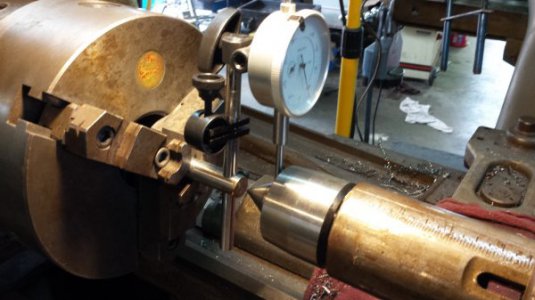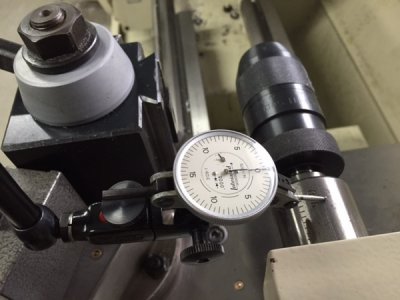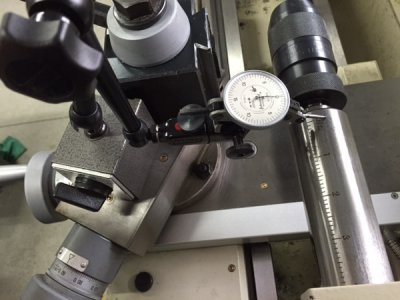- Joined
- May 14, 2013
- Messages
- 237
I have a 10x22 King Industrial lathe. I have been having fits trying to get home made reamers to cut an accurate blind hole, everything comes out substantially oversize! I suspected a chip had found it's way under the ear surface of the tailstock on top of the bed causing the quill to have a "downward " attitude. I disassembled everything and checked with a fine bench stone for high spots all appears to be good. the inside of the quill ( MT#3) seems to be good , I may have to get a #3 taper reamer to verify that there isn't a high spot on the inside. With the drill chuck installed on an adapter and a 3/4" chucking reamer ( 5/8") shank in the chuck, using a Starrett .001" dial indicator . I am getting aprox. .008" of deflection in a down direction over 7" of run , tailstock toward headstock? I have tried changing the orientation of the drill chuck and adapter to see if the angle changes with no improvement ! Help please.




